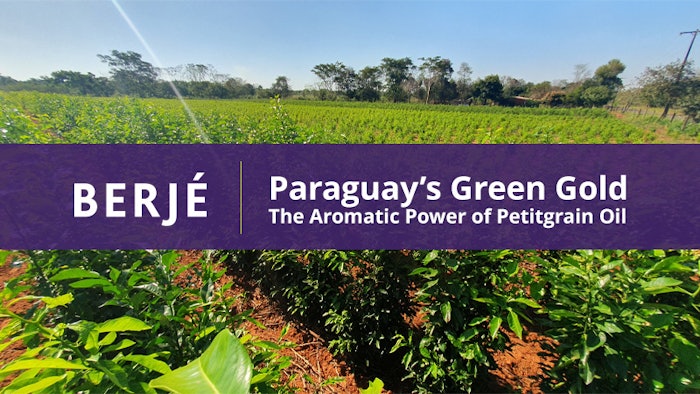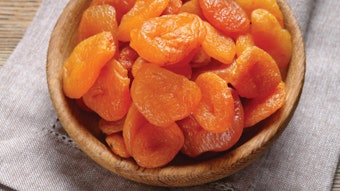
Petitgrain Oil is steam-distilled from the leaves and twigs of the fragrant Citrus x aurantium botanical, better known as the “bitter orange tree.”
For centuries, bitter orange has been cultivated for its aromatic properties, though the botanical did not arrive in Europe until the 10th century, when it was introduced to Spain through the Moors. Almost immediately, bitter orange was propelled into the European spotlight due to its strong aromatic qualities, where it remained a mainstay until it was eventually shipped overseas to Florida and the Bahamas. Bitter orange flourished in the “New World,” quickly solidifying itself as a staple component of tropical and subtropical agriculture.
 Depending on the variety, bitter orange trees can grow up to 10 meters tall. The leaves of the tree are rich and green, as they contain the oil glands from which petitgrain is derived.
Depending on the variety, bitter orange trees can grow up to 10 meters tall. The leaves of the tree are rich and green, as they contain the oil glands from which petitgrain is derived.
In the modern essential oils industry, there are dozens of regions and localities that produce petitgrain oil, though none are able to match the quality, quantity, and consistency of Paraguay. The climate, rainfall, and soil fertility of Paraguay are highly optimized for bitter orange fruit production, allowing for uninterrupted growth throughout the year.
However, despite these many advantages, the process of harvesting material for petitgrain oil is still quite intensive. To produce a single kilogram of petitgrain oil, harvesters must hand-pick the leaves and twigs of more than 150 bitter orange trees. This makes petitgrain production a delicate and time-consuming process, though it results in a natural product of unparalleled quality.
Berjé partners with ALPACASA to produce our petitgrain oil within Paraguay – established in 1998 as a specialized manufacturer of local essential oils, they are one of the foremost producers of petitgrain in the region, sourcing material from over 200 farming families from across dozens of agricultural communities. ALPACASA also provides these communities with additional services such as advanced education opportunities and technical assistance, ensuring a long and healthy future for rural harvesters.
 ALPACASA works with more than 200 farming families from across dozens of petitgrain-producing communities throughout Paraguay.
ALPACASA works with more than 200 farming families from across dozens of petitgrain-producing communities throughout Paraguay.
The petitgrain oil produced through ALPACASA tends to be a standout ingredient in any flavor or fragrance composition due to its unique mixture of fresh, floral, and bittersweet notes. Its strong, somewhat peel-like aroma is used extensively in perfume, where it imparts a refreshingly tart top note alongside fruity and woody undertones. In flavor, petitgrain oil is similarly bittersweet and aromatic, with a floral freshness contrasted by woody and herbaceous undertones. It works well when used alongside sweeter notes such as honey, apricot, and peach.
 Petitgrain Oil contains a unique blend of fresh, floral, and bittersweet notes. Its strong, somewhat peel-like aroma is used extensively in perfume, where it imparts a refreshingly tart quality alongside fruity and woody undertones.
Petitgrain Oil contains a unique blend of fresh, floral, and bittersweet notes. Its strong, somewhat peel-like aroma is used extensively in perfume, where it imparts a refreshingly tart quality alongside fruity and woody undertones.
In modern markets, petitgrain oil truly shines for its use within masculine and unisex fragrances. Since the beginning of the post-pandemic era, petitgrain has steadily risen to become one of the most popular inclusions in shaving cream and aftershave products yet again, enjoying a newfound renaissance of mainstream consumer attention.
This is primarily due to the continued enthusiasm for genre-blending fragrances and an overall shift towards experimentation with citrus bitters, especially when they are paired with fresh and woody aromatics. The refreshingly bittersweet aroma of petitgrain fits right into this category, especially when paired with materials such as guaiacwood, cabreuva, and bois de rose.
Such a widespread renewed interest in petitgrain provides excellent news to countless local farming communities throughout Paraguay, many of which rely solely on the essential oil to provide for their needs. For many, the botanical represents a stable and sustainable method of earning an annual income, as the production of petitgrain does not compete with any food crops.
 When properly cared for and maintained, the bitter orange trees from which petitgrain is derived can provide more than 20 years of stable income.
When properly cared for and maintained, the bitter orange trees from which petitgrain is derived can provide more than 20 years of stable income.
Berjé is proud to support these families at the source, and our partnership with ALPACASA guarantees that petitgrain oil will remain available for generations of perfumers and flavorists to come.
To request a sample of Berjé’s Petitgrain Oil, please visit our product page on Berjé Online.
Disclaimer:
The above paid-for content was produced by and posted on behalf of the Sponsor. Content provided is generated solely by the Sponsor or its affiliates, and it is the Sponsor’s responsibility for the accuracy, completeness and validity of all information included. Perfumer & Flavorist takes steps to ensure that you will not confuse sponsored content with content produced by Perfumer & Flavorist and governed by its editorial policy.










